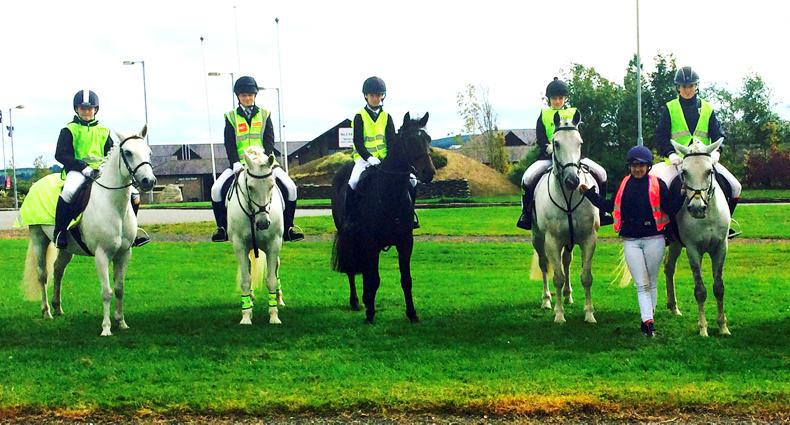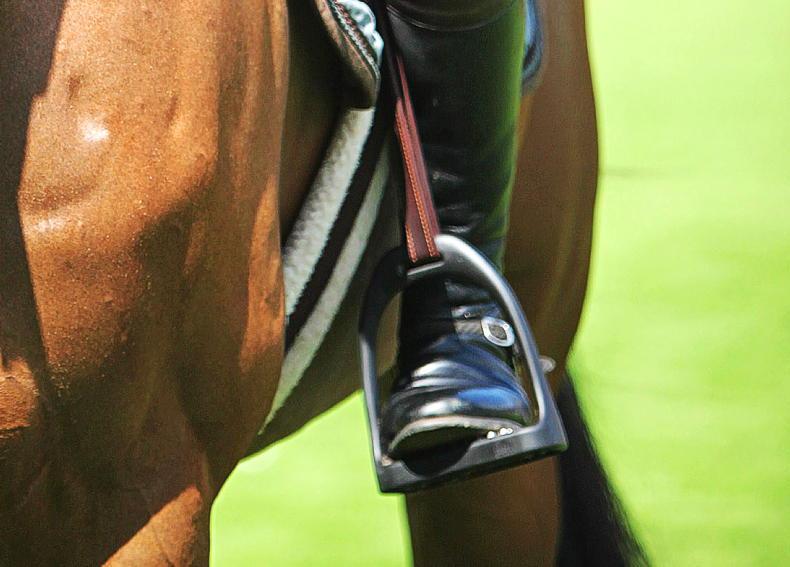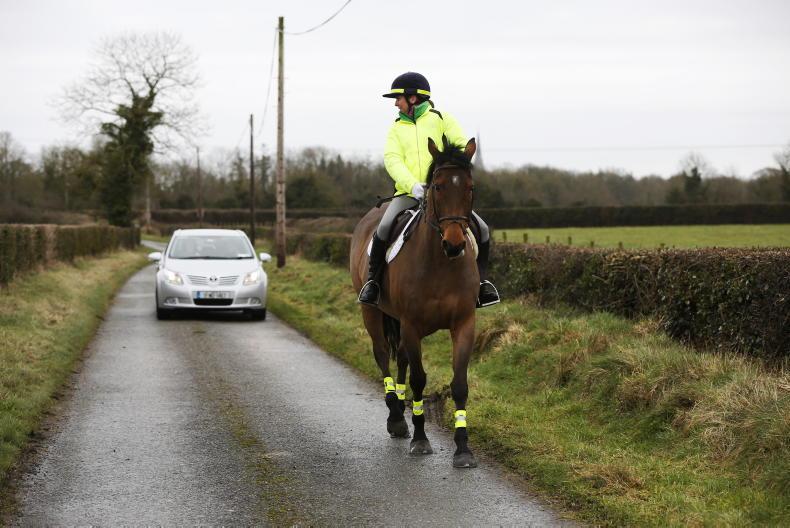A RECENT court case in England has once again unfortunately highlighted the need for increased safety for horses and riders out hacking on the roads.
Almost one year ago, two horses died as a result of being hit by a car while they were out hacking in Surrey. The horses were semi-retired and both were 30-years-old. One died as a direct result of being hit from behind by the car, which caused him to break his leg. The other suffered a heart attack shortly after the incident.
The case was recently in the courts, the driver was found guilty of driving without due care and attention and was fined £600, ordered to pay costs and got five points on her licence. The owner of one of the horses has voiced her concerns that more should be done to protect horses on the roads.
Hacking is one of the most enjoyable ways to spend an hour or two. It can help improve horse and rider fitness and can allow horse and rider to unwind physically and mentally. However, if you are hacking it is vital to put safety first.
Always tell someone where you are going hacking and at what time. If possible carry a mobile phone when you are hacking in case you need to contact someone urgently. Do not use your mobile phone while you are hacking, keep it for emergency use only. Never ride with earphones in or loud music playing, this may prevent you from hearing any oncoming traffic, especially on a windy day.
CONSIDER THE LOCATION AND TIMING
Plan ahead when you are going hacking. Whether you are travelling to hack at a location or just going out your gates you should always plan ahead.
Simple things will make a difference, try to hack at times when traffic is likely to be lighter, avoid rush hour and school drop-off and collection times whenever possible. If you’re planning on hacking on roads you haven’t used before it might be worth your while to drive the route around the time of day you are thinking of hacking to get idea of traffic volumes.
In the case in England lack of visibility due to bright, low sunlight was considered as a factor. Bright winter sunlight can be one of the most difficult conditions to see clearly in for all road users. Choose the best daylight possible, avoiding dawn and dusk. Avoiding riding on the roads if the weather is very poor or when it is dark.
If you are hacking at a location always make sure you have permission. Public forests and woodlands should be accessible for horses but it is always safer to check beforehand. Also find out if any other activities take place at the location, these tend to be more on weekends rather than during the week but it is better to find out in advance.
Being organised and finding out where and when you can hack is safest for everyone involved. No matter where you are hacking you should always be considerate of other road users and remember to treat others how you expect to be treated yourself.
SAFETY FIRST
There are very few if any places where it is safe to hack without wearing reflective clothing or equipment on your horse.
Riders have to take responsibility for making sure that they are safe and visible while out hacking. Reflective equipment has come on a long way and now it is possible to get almost any item of clothing or equipment in hi-viz material.
Exercise sheets, boots and attachments for tack are also available to put on your horse. Consider what the natural light will be like when you are hacking and put on enough reflective equipment as necessary. Ideally you should always wear at least one piece of hi-viz clothing or equipment.
All equipment on both horse and rider should be correctly fitting and up to standard. When choosing what you are going to wear and what equipment you need think about the protection you would want if you were to fall off on the road.

Members of the Kildare Pony Club after completing their road safety test, dressed in the correct hi-viz clothes and horse equipment Photo: Emer Bermingham
ABIDE BY THE RULES
Cooperation between all road users is the only way hacking will remain possible. Before you consider going hacking make sure you know the rules of the road and be sure that your horse is safe to hack.
Always ride on the left-hand side of the road (this applies if you are leading a horse too) and obey all of the rules of the road. If you are leading a horse on the road the handler should be between the horse and the traffic.
Make sure that your horse does not block the roadway for other traffic or pedestrians.
All road signs apply to riders as well as cars. Make sure you know and understand the road signs before going hacking.
If you are hacking in a group make sure the group is not too big. If you think it is, divide into smaller groups, and do not block the road from other users.
Hacking is fantasic for children and beginner riders, however, they must be competant before going hacking and should always be accompanied by an experieced rider. The same applies for hacking young horses – they should be ridden by an experienced rider and accompanied by another experienced rider on a quiet horse.
One of the best ways to get a better understanding how to ride on the roads and be as safe as possible is to complete the Irish Pony Club (IPC) or British Horse Society (BHS) Riding and Road Safety exam. Details for these exams can be found on the IPC and BHS websites.
ROAD SIGNALS
Riders should know all of the appropriate road signals to use while out hacking. Signals should clearly show your intentions and be given in good time. Never signal with you whip in your hand, it should be placed in the other hand which is holding both reins.
Always look behind you before signalling and make eye contact with drivers whenever possible. Never move off without signalling. If you are hacking with in a pair or small group make sure everyone knows what they are doing and signals clearly. Always do a double check to make sure that there is no traffic coming, especially when moving off or changing route.
There is a full guide to riding on the road published by the Road Safety Authority in partnership with Horse Sport Ireland available on the RSA website. A direct link the document is available with this article online on The Irish Field website.


 This is a subscriber-only article
This is a subscriber-only article
 It looks like you're browsing in private mode
It looks like you're browsing in private mode











SHARING OPTIONS: